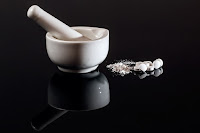Zoetis, Inc., a global animal health company based in New Jersey, recently completed the construction of a 19,000-square-foot, three-story addition to its production site in the Lincoln province of Nebraska. Zoetis introduced its new product, Canine Atopic Dermatitis Immunotherapeutic, which is an antibody therapy for dogs, targeted at reducing atopic dermatitis. The company also introduced a vaccine that cures PEDv, one of the emerging diseases that recently destroyed pig farms in the U.S. The new plant will facilitate the manufacturing of an injectable hormone, Synovex, which promotes weight gain in cattle. According to the authorities at Zoetis, Inc., the product will be ready to be supplied to customers by 2016.
Browse Research Report: http://www.transparencymarketresearch.com/veterinary-antiseptics-market.html
Last year, Zoetis was engaged in manufacturing a vaccine to cure porcine epidemic diarrhea virus. The company will expand its animal healthcare services in Lincoln and offer reliable animal health products to livestock suppliers, veterinarians, and pet owners. Zoetis, Inc. will be looking to spread its services with new products that are meant to fulfill the changing market needs and assist veterinarians in improving their approach to animal treatment and disease prevention.
According to Transparency Market Research, the veterinary antiseptics market in Latin America, Asia Pacific, and Rest of the World stood at US$243.0 mn in 2014 and is expected to reach US$401.6 mn by 2023, at a 5.60% CAGR.
Iodine and Iodophors Sector to Register Highest Growth
Safer and more effective varieties of antiseptics, used for cleaning the skin and wounds, are being adopted by veterinarians and animal care clinics to treat pets. The veterinary antiseptics market in Latin America, Asia Pacific, and Rest of the World is segmented on the basis of product type into iodine and iodophors, alcohol, chlorhexidine, hydrogen peroxide, and others. In veterinary care, iodine and iodophors are the most commonly used antiseptics. The iodine and iodophors sector accounted for the highest market share in 2014 and is expected to maintain its dominant position by 2023. Iodophors also act as a suitable carrier for iodine and provide prolonged and sustained release of antiseptics. Iodophors and iodine are effective against fungi, bacteria, and viruses.
Chlorhexidine is commonly used as an antiseptic for common domestic animals such as horse, dogs, cats, cows, sheep, and poultry animals. Alcohol is used before vaccination in small animals including dogs, sheep, and cats. Based on species, veterinary antiseptics market in Latin America, Asia Pacific, and Rest of the World is classified into bovine, porcine, ovine, equine, canine, feline, and camelidae. In terms of consumption trends and population analysis, the bovine antiseptics sector accounted for the highest market share in 2014.
Browse Press Release: http://www.transparencymarketresearch.com/pressrelease/veterinary-antiseptics-market.htm
Introduction of Advanced Antiseptics to Boost Veterinary Antiseptics Market
Strict regulatory guidelines are expected to restrict the growth of the veterinary antiseptics market. However, the introduction of new veterinary antiseptics by the leading market players is predicted to boost the growth prospects of the market during the forecast period. Some of the leading companies in the veterinary antiseptics market in Latin America, Asia Pacific, and Rest of the World are Bayer AG, Elanco Animal Health, Inc., M.B.D. Marketing (S) Pte Ltd., Merial, Vallée S.A, Zoetis, Inc., Continental Manufacturing Chemist, Inc., Indian Immunologicals Ltd., Merck Animal Health, and Nicosia International.




















